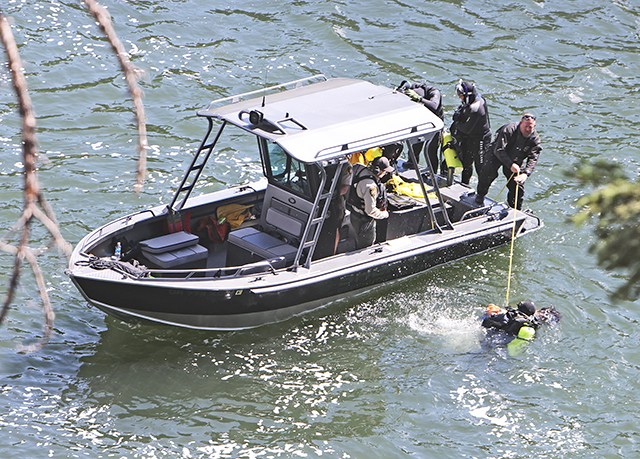Smaller Navy ship has rocky past — and key support
Published 5:00 am Friday, April 6, 2012
MOBILE, Ala. — The Navy’s newest ship is designed to battle Iranian attack boats, clear mines from the Strait of Hormuz, chase down Somali pirates and keep watch on China’s warships. The ones built here even look menacing, like Darth Vader on the sea.
“It’s going to scare the hell out of folks,” said Rep. Jo Bonner, R-Ala., who is one of the ship’s biggest boosters in Congress.
Trending
Bonner acknowledged that the ship had needed a “tweak” here and there — his allusion to one of the most tortured shipbuilding programs in Navy history, a decade-long tale of soaring costs, canceled contracts and blown deadlines.
One of the two $700 million ships completed so far has had a major leak and crack in its hull, while the other is at sea, testing equipment that is failing to distinguish underwater mines from glints of light on the waves. More ominously, a report late last year by the Pentagon’s top weapons tester said the ship “is not expected to be survivable in a hostile combat environment.”
But for better or worse, the Pentagon and the Obama administration are embracing the Littoral Combat Ship as the future of naval warfare and just what is needed to meet 21st-century threats.
Able to operate on the high seas and along shallow coastlines (the “littorals”), the fast, maneuverable ship is central to President Barack Obama’s strategy of projecting U.S. power in the Pacific and the Persian Gulf. It adds a relatively small and technologically advanced ship — part of what former Defense Secretary Donald Rumsfeld envisioned as a lean, proficient military — to America’s traditional blue-water Navy of aircraft carriers and destroyers.
“This ship is the right ship at the right time,” Robert Work, the undersecretary of the Navy, said in a recent interview. “We’ve got to prove it to all the naysayers.”
A priority during austerity
Trending
For a Pentagon that must make deep budget cuts — about $450 billion over the next decade, and possibly up to $1 trillion if Congress does not make alternative reductions — the shallow-water ship is a priority. Relatively inexpensive, at least compared with a $2 billion destroyer, it remains critical to the Navy’s goal of reaching a 300-ship fleet, assuming that all 55 littoral combat ships are built as planned. Right now the Navy has 285 ships, making it, as Mitt Romney — the leading Republican presidential candidate — points out, the smallest Navy since 1917.
(“An accurate observation that is totally irrelevant,” Work said. In 1917, “We didn’t have any airplanes in the fleet. We didn’t have any unmanned systems. We didn’t have Tomahawk cruise missiles.”)
The Pentagon has made only the most modest of cutbacks on the new ships by delaying purchases of two of them in future years, and prospects for continued congressional support for the program are good, despite years of objections from some on Capitol Hill.
“The story of this ship is one that makes me ashamed and embarrassed as a former Navy person,” Sen. John McCain, R-Ariz., a onetime Navy pilot, said in late 2010, citing billions of dollars in cost overruns.
But the Navy now insists it has brought the costs down and that the ships will each cost less than $400 million, and that after an “utter procurement mess” — Work’s words — the problems are being solved. (The first ship, despite the leak and crack, is expected to be deployed to Singapore next year, at the southern edge of the South China Sea, and the one now in sea trials could be ready by 2014.)
Analysts say an important factor driving the Navy and Congress is that the vessels the ships are meant to replace — frigates and minesweepers — are aging, and that there is little else in the pipeline. The combat ship is seen as too far along in production to be killed now.
“It’s one of those things that once the snowball goes down the hill, it just keeps rolling,” said Rep. Duncan Hunter, R-Calif., who has been one of the ship’s biggest critics but said he was bowing to the inevitable. “The Navy likes it. There’s no way I’m going to stop it.”
Here in Mobile, General Dynamics and an American division of an Australian ship maker, Austal USA, are under contract to build 10 of the ships by 2019. The shipyard is booming and expects to soon have 4,500 workers, making it one of the largest private employers in the state and the darling of city fathers and Bonner. (Another version of the ship, which has a different appearance, is being built by Lockheed Martin in Wisconsin.)
A tour at the Mobile yard of a ship that is nearly complete, the USS Coronado, shows a bridge with consoles of video screens that allow the captain to drive the ship with a joystick or from a laptop. The 400-foot ships can go faster than 40 knots, or nearly 50 mph — the ones built in Mobile have aluminum trimaran hulls, which create less drag in the water and more speed — and are able to operate in 20 feet of water. They have relatively small crews of 75, decks for helicopters and a variety of equipment modules that can be swapped for different missions, like mine-hunting, submarine warfare or special operations.
Working out the kinks
The Navy says that ideally, a littoral combat ship would go nowhere near a minefield. Instead a helicopter would take off from its deck and use a laser to find a mine, then lower a small drone attached to a cable into the water to shoot an explosive at the mine. The combat ship would also have on board a larger underwater drone that could be lowered into the sea to hunt for a mine and then blow it up.
In trials, the helicopter laser has been registering too many false positives — it is finding mines, but also reading light glints on the water as mines. “We’re developing new algorithms and software to improve it,” said Christopher Johnson, a spokesman for the Naval Sea System Command.
As for the ship’s ability to survive in a combat environment, missiles could more easily penetrate its hull and do more damage than to a larger, more powerful ship. It also has fewer and far less sophisticated defenses. Still, the Navy argues that it will be heavily armed with guns and missiles and will operate in hostile waters, like the Persian Gulf, only with larger ships nearby.







